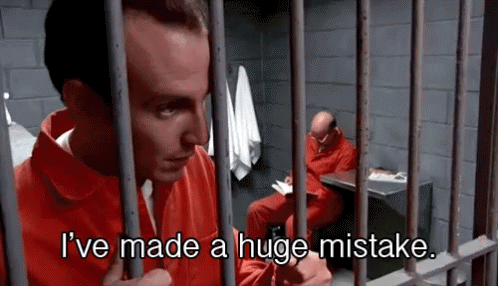2rocky
Well-known member
- Joined
- Jul 23, 2010
- Messages
- 5,202
I recall getting a postcard every Spring from "Trophy Outfitters" where he pitched this investment "opportunity". Even as a younbgster I knew it had to be a shady deal.....Glad I trusted my gut.

DENVER (CBS4 ) – A Pueblo-based rancher who defrauded more than 100 investors of nearly $5 million will be required to pay back those losses in addition to spending almost two and a half years behind bars.
Thursday, U.S. District Court Judge Robert E. Blackburn sentenced Richard K. Sears to 41 months in federal prison, three years supervised probation upon his release, and restitution for the 111 investors in the amount of $4,969,384.35.
Sears, 73, began collecting funds in 2008, according to court documents, with the goal of developing a new breed of cattle called Rocky Mountain Romangus. Proclaimed the result of cross-breeding Angus heifers and Romangnola bulls, the breed was determined by investigators to have never come into existence under Sears’s management.
In the case indictment, Sears was described as the leasee of several southern Colorado properties where he allowed big game hunting under the business name “Trophy Outfitters, Inc.”
He used advertisements through the mail to make appeals to those hunting customers for funds toward the expansion of his cattle herd, according the case documents. Sears, as herd owner, would purchase heifers using the investors’ “entry fee,” then feed, graze, brand and breed them, and keep the calves. The investors were promised a 10 percent “leaseback fee.” At the end of the five-year contract term, Sears would buy those cows for at least the original purchase price.

(credit: iStock/Getty Images)
By 2011, though, Sears’s cattle operation began to falter. Prosecutors claimed the business then began its fraudulent activity.
Prosecutors brought into evidence a letter written to one investor in September 2013 in which Sears admitted his cattle investment program was suffering from a series of operational setbacks and financial problems. Sears blamed the troubles on a lack of pasture due to drought, subsequent increasing hay and feed costs, reductions in available irrigation water, and a disease that required his herd to be quarantined.
Yet Sears continued to solicit funds. In fact, he received an additional $800,000 from a dozen new investors. Prosecutors, however, accused Sears of being untruthful about the condition of the program with investors, and of using the new funds to recover from his earlier losses. In some case, prosecutors stated Sears accepted funds but purchased a fraction of the number of new animals that he was contractually required to buy. In some cases, he purchased none on behalf of the investor.
Sears also did not disclose to investors that he used money raised through the cattle program to repay $278,274 to the Internal Revenue Service. A court ordered Sears to pay that amount to settle a 2013 case which involved his failure to file an income tax return.
In July of 2014, a particular investor became suspicious. That investor filed a court order in district court in Pueblo demanding Sears’s herd be inventoried. Brand inspectors with the State of Colorado Department of Agriculture eventually determined that Sears possessed substantially fewer cows than he was contractually obligated to possess for all of his other investors.
“Sears promised investors that he would purchase or acquire in excess of 5,000 cows in total for such investors,” the indictment reads. “Over the course of the scheme, however, SEARS only purchased or acquired, and branded approximately 2,000 cows for investors despite his promises.”
Sears filed for bankruptcy in 2015.
Federal prosecutors filed their indictment against Sears in 2019.
Last May, Sears agreed to plead guilty to one count each of mail fraud and money laundering. He faced a maximum of 30 years imprisonment on those charges alone. He also agreed to the repayment of investors’ losses. In exchange, federal prosecutors dropped nine other charges.
“This complex case required thousands of hours of investigation by U.S. Postal Inspectors and other investigative staff,” Ruth Mendonça, Inspector in Charge of the Denver Division of the U.S. Postal Inspection Service, said in a press release. “This sentence makes every minute spent unraveling this scam worthwhile.”
Losses for nine of the investors ran into six figures.
Sears has until noon on March 1, 2022, to report to the U.S. Bureau of Prisons to begin serving his prison term.







